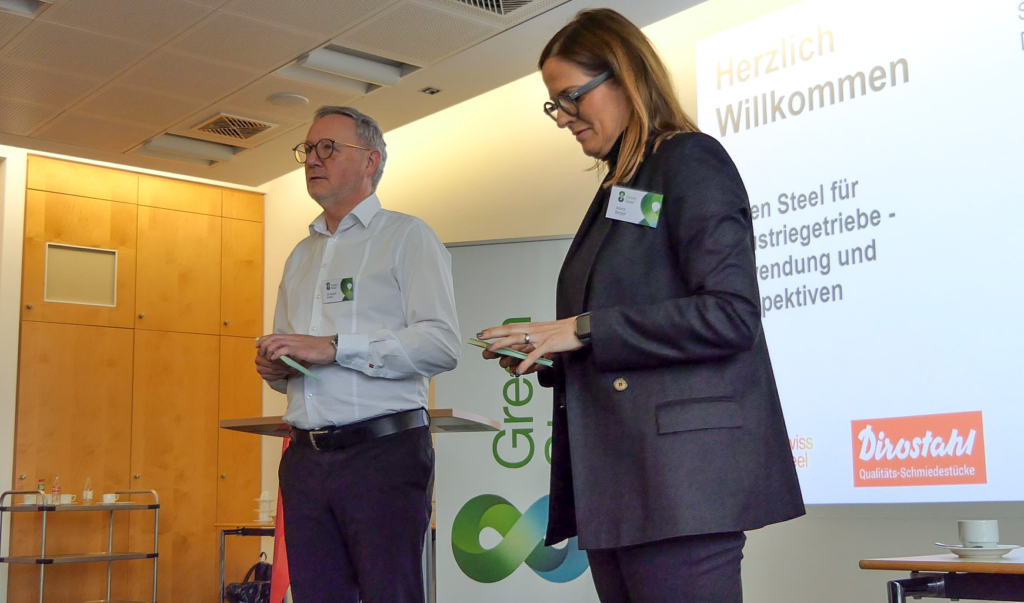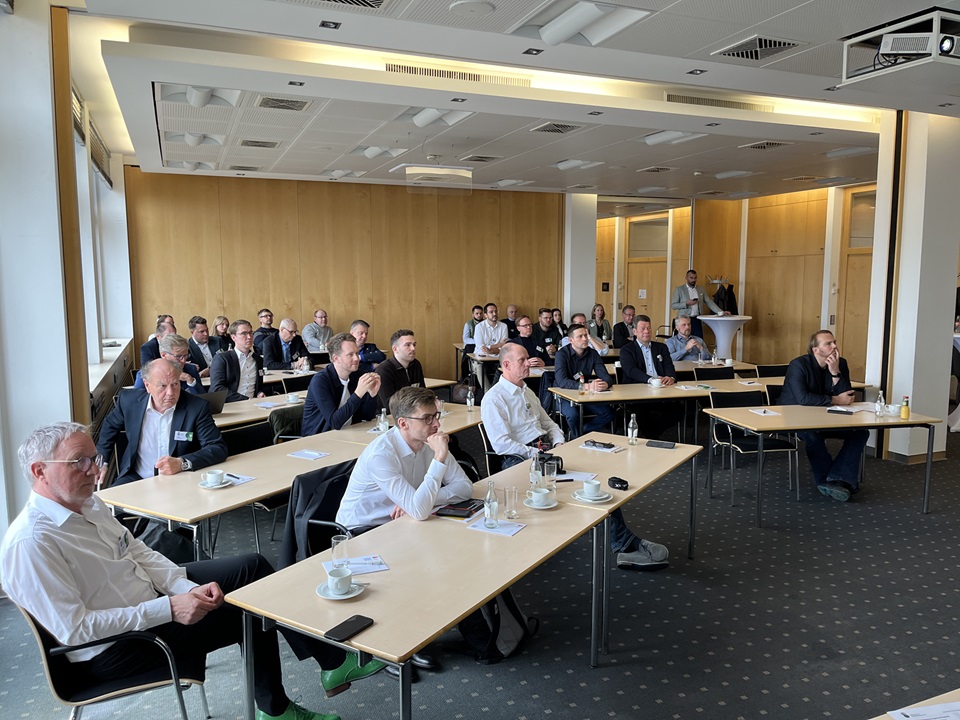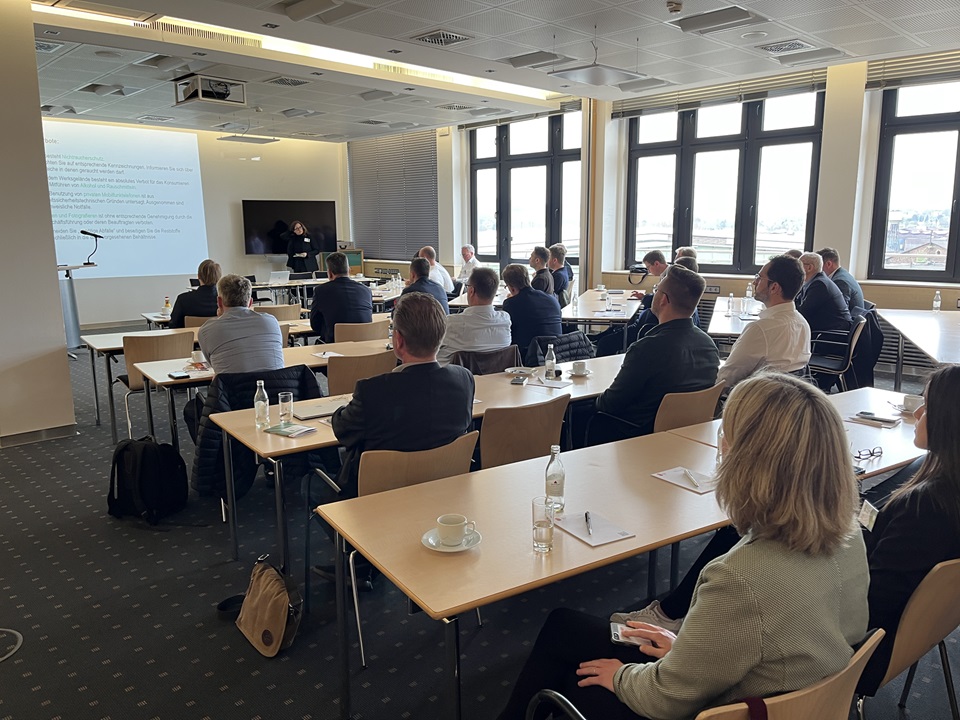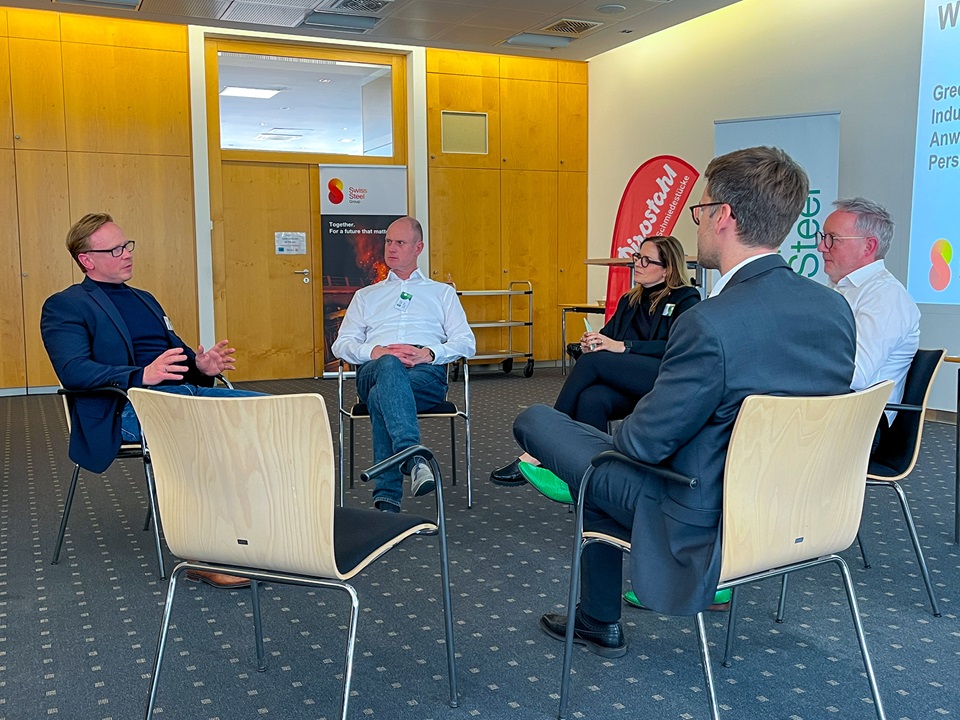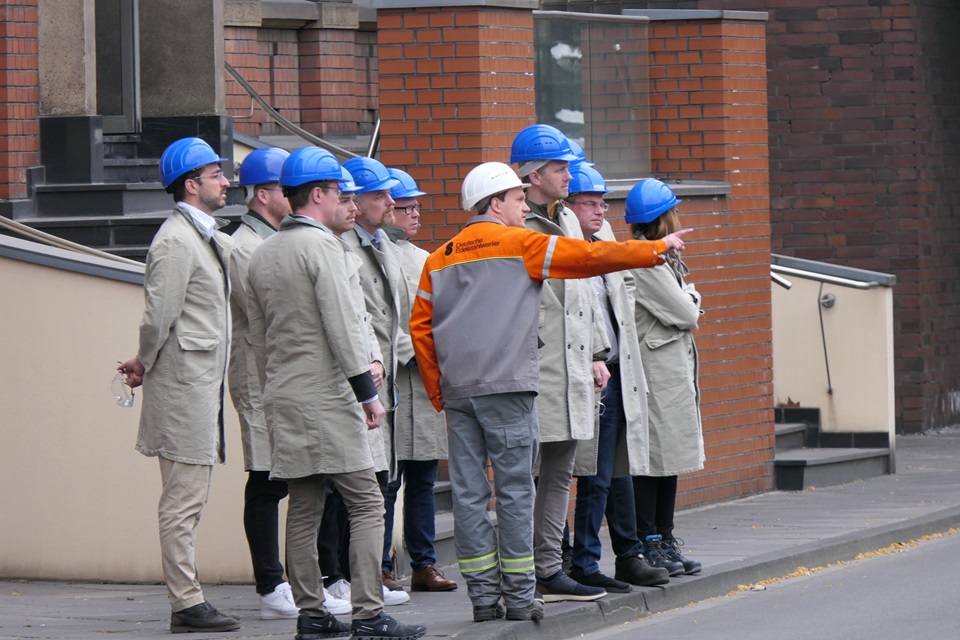Emmenbrücke, 17. April 2025 – With the specialist event “Green Steel for Industrial Gearboxes: Applications and Perspectives”, the Swiss Steel Group and Dirostahl sent a powerful signal for the sustainable transformation of industry. Around the forward-looking topic of green steel, leading representatives from business, technology, and infrastructure gathered at the Deutsche Edelstahlwerke site in Witten.
The event was opened by Dr. Tim Rekersdrees, COO of Deutsche Edelstahlwerke, and Markus Lüke, CEO of Dirostahl, and moderated by Anina Berger, VP Group Marketing, Communications & Sustainability at Swiss Steel Group. Right from the beginning, it became clear: this day was more than just a meeting of experts – it provided space for real dialogue, new partnerships, and tangible impulses.
From Practice – For the Future
The lecture series began with Stefan Feichtinger, Sr. Manager Corporate Technology at Swiss Steel Group. In his presentation, he spanned the arc from the company’s strategic roadmap to the concrete implementation of sustainable solutions in the product portfolio. His core message: sustainability must be thought of holistically and actively shaped – from the melting process to the finished component.
Dirostahl contributed a similarly practical and future-oriented perspective with a presentation by Sales Director Christoph Gollan. The focus was on transparency in the CO₂ balance of forged parts. The systematic recording of the Product Carbon Footprint (PCF) and targeted emissions reduction in production illustrated how climate goals can be firmly anchored in everyday industrial practice.
A particular highlight was the presentation by Dr.-Ing. Guido Mittler, who spoke on behalf of Dirostahl about the use of artificial intelligence in heat treatment. Intelligent capacity planning is not only a tool for increasing efficiency but also a key to significantly reducing energy consumption and emissions – a practical example of how digital technologies can accelerate the green transformation.
An international perspective was brought to the event by Richard Schroeter, representative of the Port of Antwerp-Bruges. With impressive insights into the port’s hydrogen strategy, he showed how European infrastructure is being aligned with future energy demands. The question “When is hydrogen coming?” was answered not only technically, but above all with strategic foresight.
Networking, Transparency, and Shared Responsibility
In addition to the expert presentations, a plant tour and networking breaks offered numerous opportunities for in-depth discussions. The concluding panel discussion highlighted the challenges on the path toward more green steel: there was consensus that transparency and uniform standards for CO₂ calculation are essential for acceptance and comparability.
For green steel to succeed in the market, greater awareness is needed. End customers must understand why it makes sense to invest in CO₂-reduced products – and be willing to financially support the added value they bring. A particularly intense discussion revolved around the issue of comparability of CO₂ values. Without uniform calculation standards, green steel remains difficult to evaluate. Only with transparent and traceable methodology can the trust be built that is necessary for sustainable decision-making. A strong, shared conclusion of the panel: transformation cannot succeed in isolation. Only through open and honest exchange along the entire value chain can practical, future-proof solutions be developed.
Conclusion: The transformation to a climate-friendly industry can only succeed through joint efforts of all stakeholders along the value chain. The event in Witten was a strong example of this collaborative path – and a clear signal: Green Steel is a reality. Now it’s time to drive it forward – together.
